30 Orders of Insects: Hemiptera
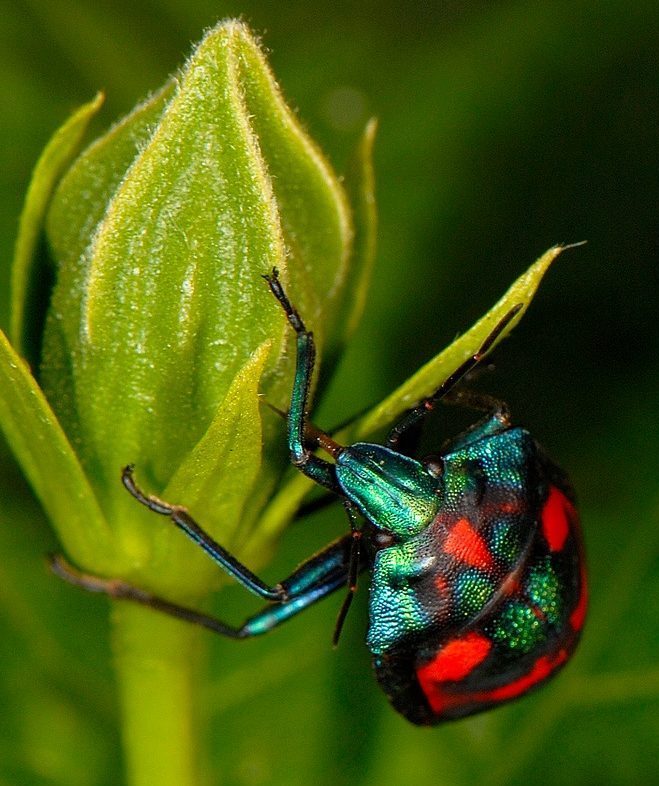
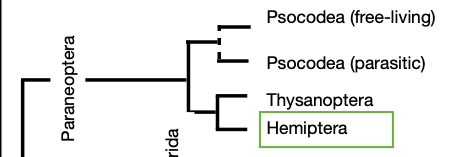
Order Hemiptera: Bugs, Leafhoppers, Cicadas, Aphids, Scale Insects
Hemiptera
- Greek, hemi = half; pteron = wing
- common name: true bugs
- A hyper-diverse group with more than 90,000 described species, 5650 Aust. spp.
- distributed worldwide; about 4000 aquatic or semi-aquatic species
- an important characteristic feature is their piercing-sucking mouthparts
- most species are plant feeders & seed feeders but also many predators, blood suckers, scavengers
- contain many important agricultural pests
- they cause direct feeding damage
- they can be vectors of many plant diseases, including viruses such as cucumber mosaic and banana bunchytop viruses
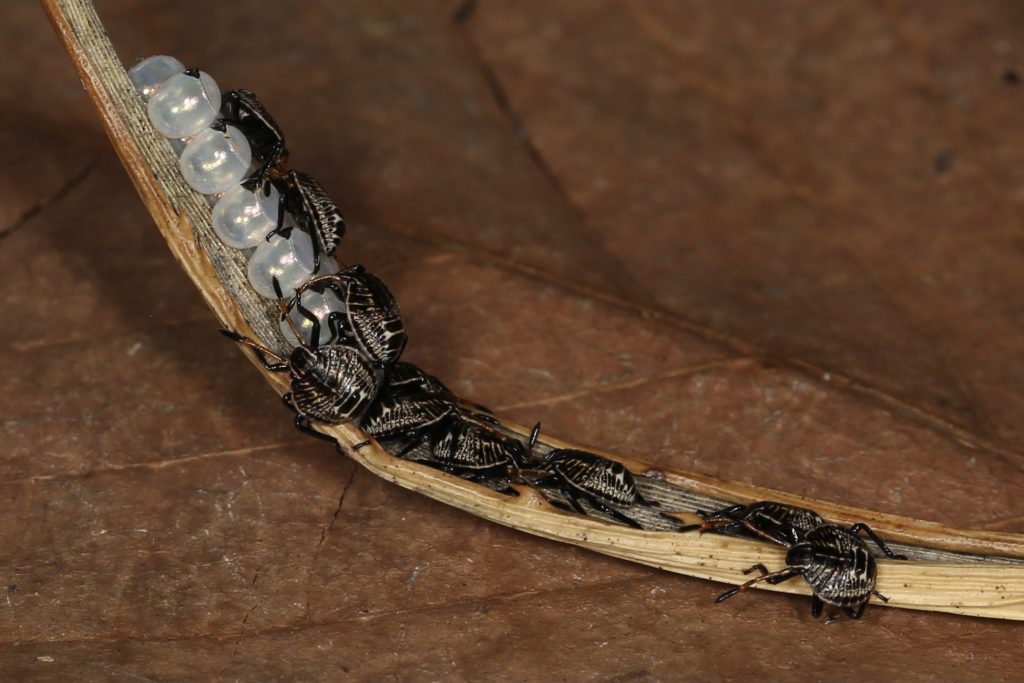
Characteristics of Hemiptera
Adults
- Small to large
- generally, mouthparts modified into needle-like stylets forming a rostrum; directed posteriorly at rest
- in most, compound eyes large; ocelli present or absent; variable antennae
- Fore wings may be thickened to form hemelytra (Heteroptera), or membranous (Auchenorrhyncha) and held roof-like over the body; wing reduction or absence is common (Sternorrhyncha)
- legs gressorial, raptorial in some spp.
- cerci absent; abdominal scent glands present in Heteroptera
Immatures
- Immature stages (nymphs) resemble small adults
Three Suborders:
Sternorrhyncha
- Includes whiteflies, aphids, coccids, mealybugs, scale insects
- Mouthparts appear to arise from between first pair of legs (Sternorrhyncha translates to “chest snout”)
- soft delicate insects; in winged forms, wings membranous
- Sedentary existence; phytophagous
- many species have a symbiotic relationship with ants
- some species are serious plant pests and vectors of plant pathogens
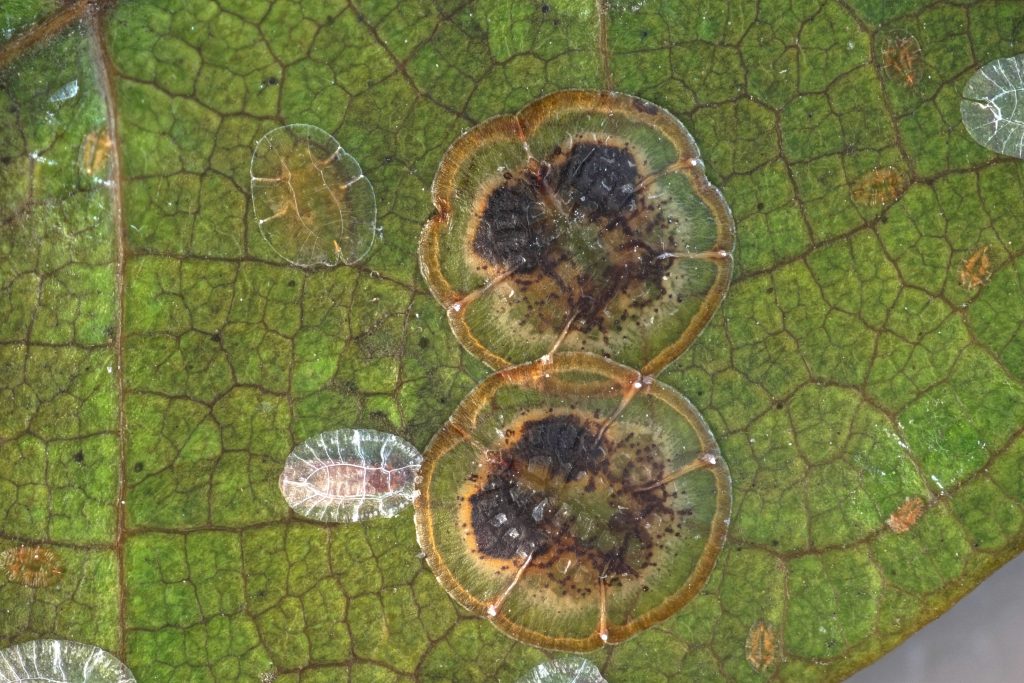
Auchenorrhyncha
- cicadas, spittlebugs, leafhoppers, treehoppers, planthoppers
- Mouthparts appear to arise posteriorly on head (Auchenorrhyncha translates to “neck snout”!)
- bristle-like antennae
- wings usually held roof-like over abdomen.
- Free-living and phytophagous
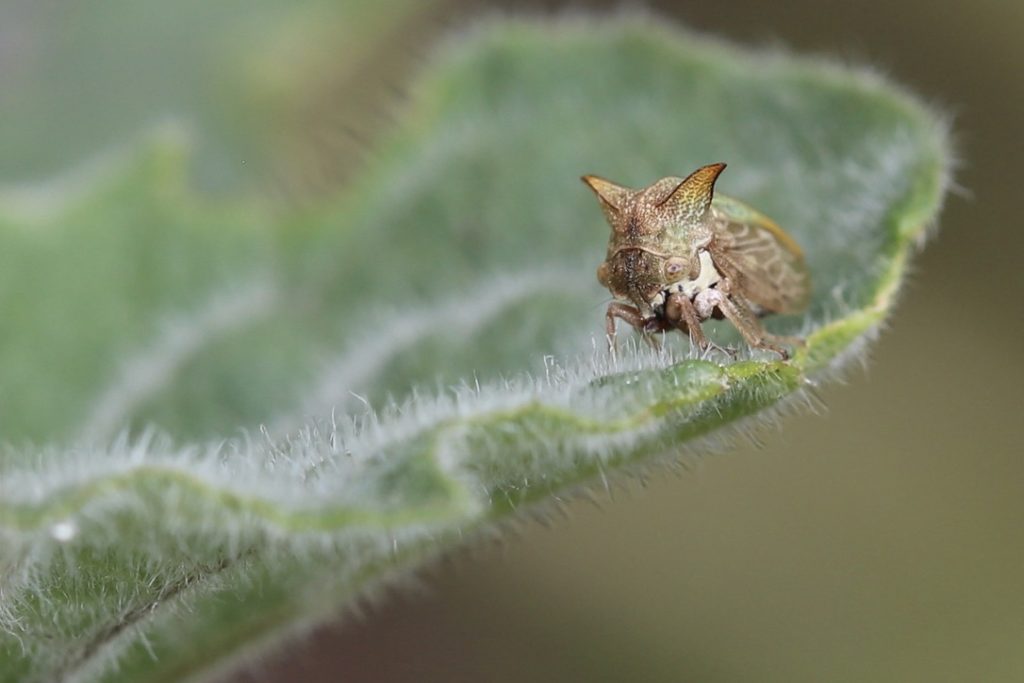
Heteroptera
- stink bugs, jewel bugs, seed bugs, assassin bugs
- mouthparts arise anteriorly on head but tucked back between legs
- Forewing has sclerotised base, membranous apex (hemelytron)
- have a large scutellum and forewings overlap forming a ‘x’ or ‘y pattern
- plant feeders, predators and blood feeders; aquatic groups are predators.
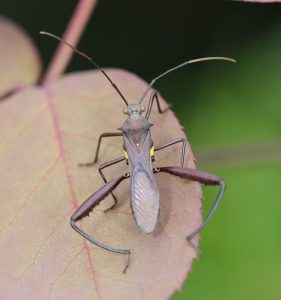
Feeding Mechanisms
Stylet-ensheath
- Found in many Sternorrhyncha and Auchenorrhyncha including aphids:
- A sheath of solidified saliva forms around the stylets as they penetrate; feed on xylem or phloem vessels. Both are very watery food (especially xylem) and need to excrete large quantities of water while feeding to aquire enough nutrients to survive. Many have a filter chamber to shunt excess water and sugar from foregut to hindgut and avoid the midgut, while filtering out amino acids to the midgut.
Lacerate-and-flush
- Found in all predators and many heteropteran herbivores:
- The stylets are repeatedly pushed one way then another. In essence, they “liquefy” a pocket of cells. Contents of the pocket are flushed with watery saliva and sucked. In predaceous Heteroptera, salivary enzymes immobilise prey very quickly – extremely painful to human (e.g. assassin bugs).
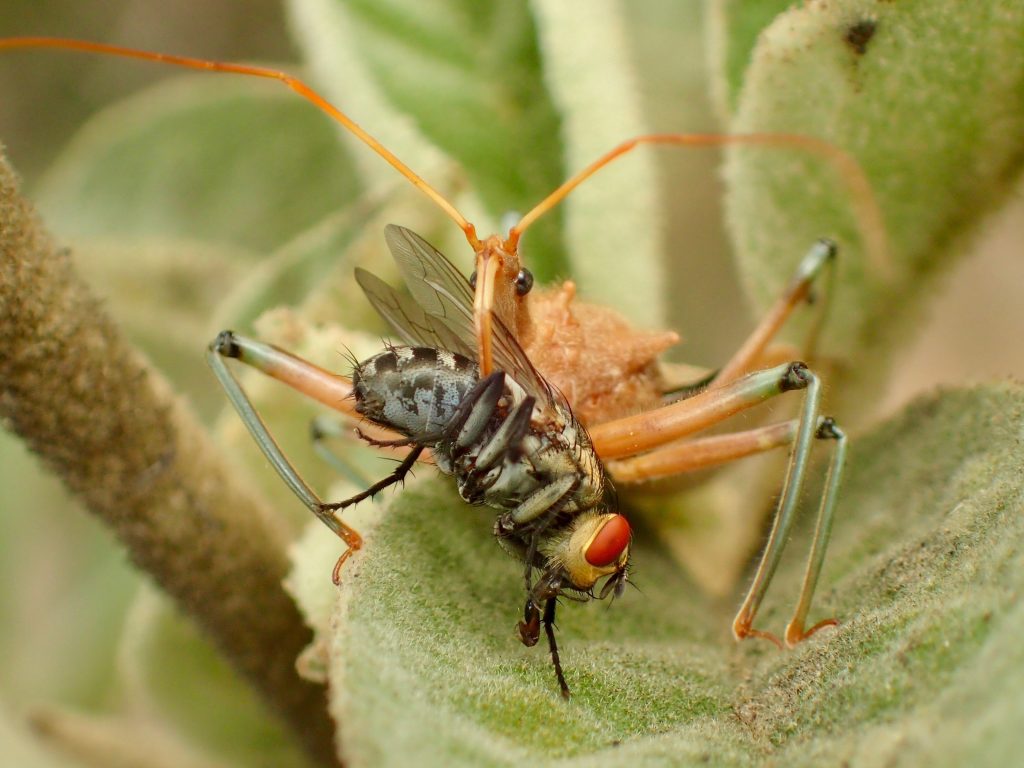
Blood-sucking
Found in specialised Heteroptera, e.g. bedbugs.
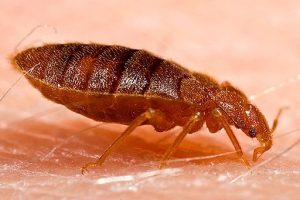
Topic Review
Do you know…?
- the main anatomical features of bugs
- the feeding mechanisms used by bugs

